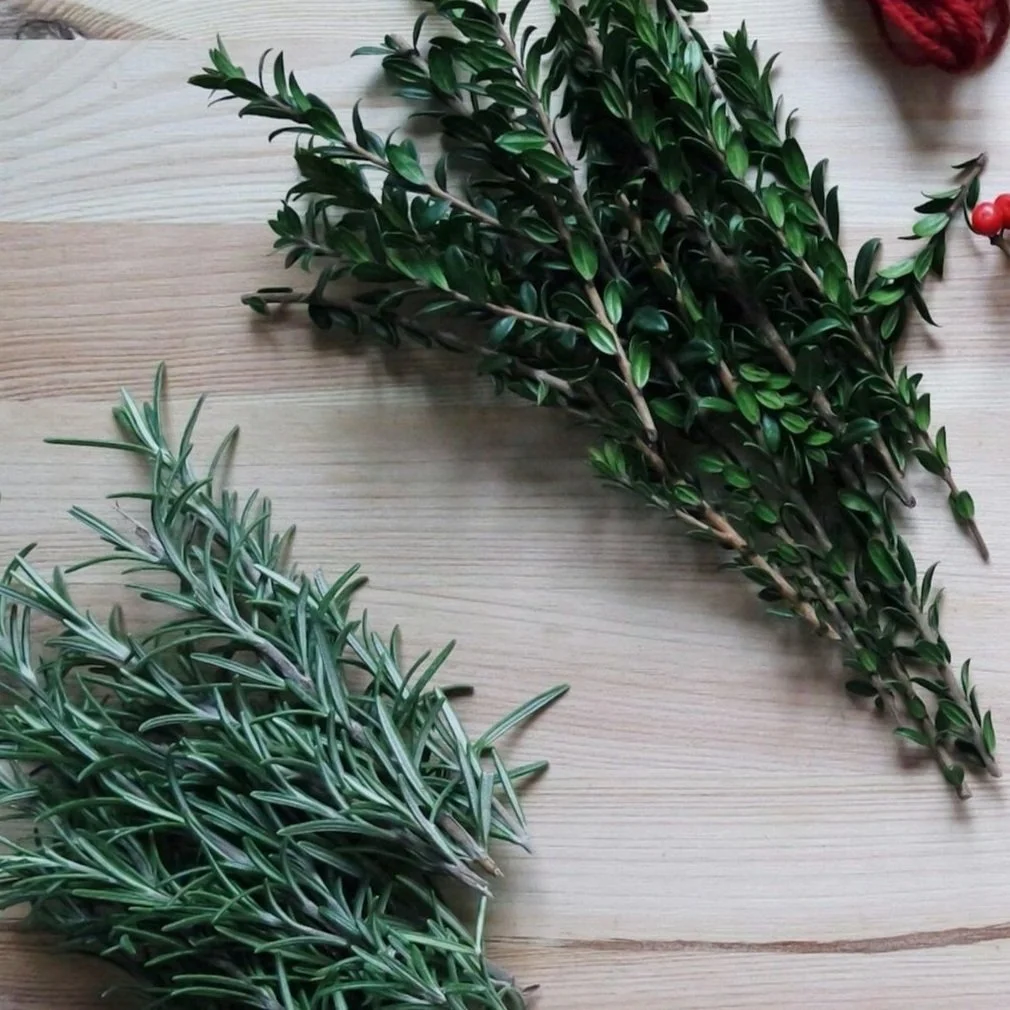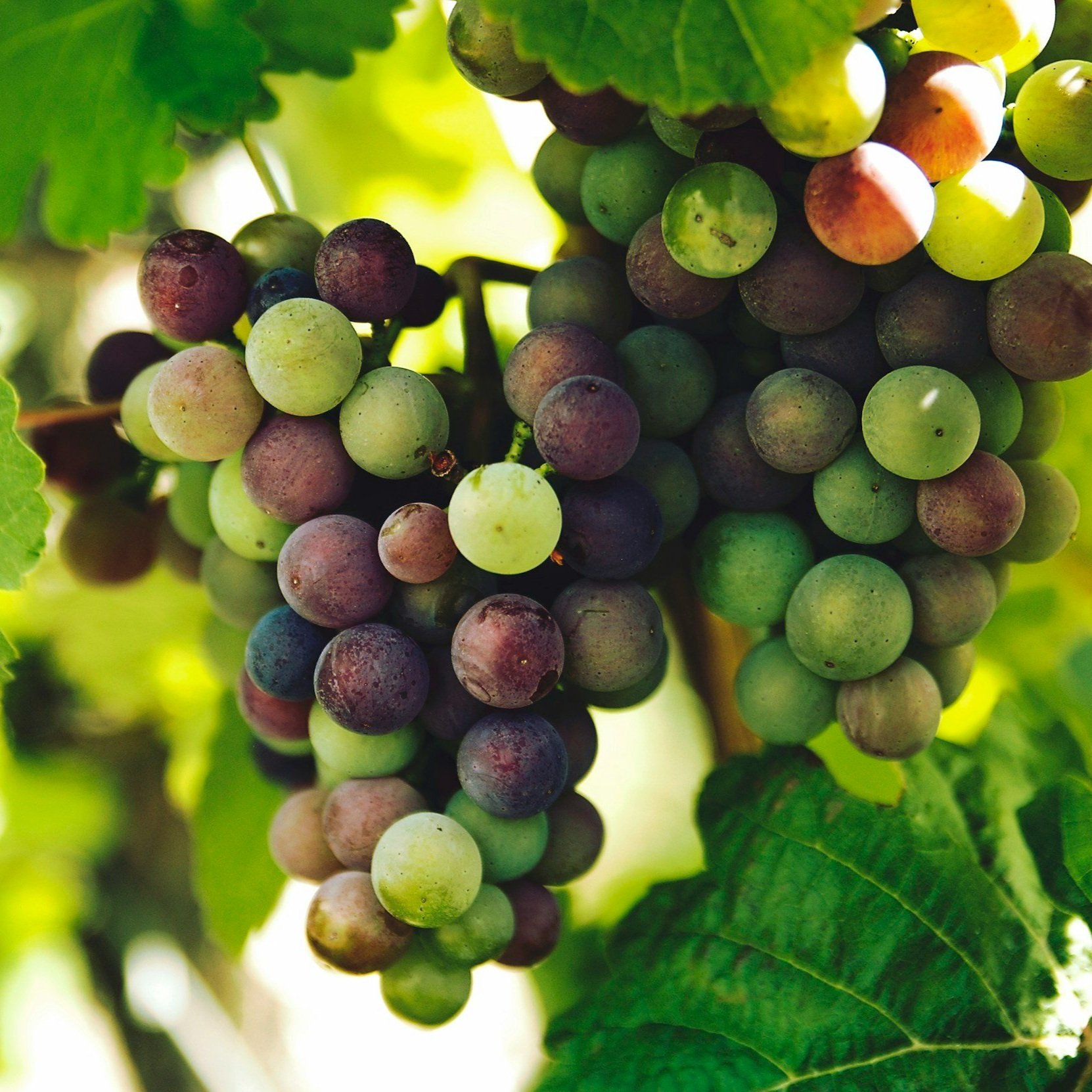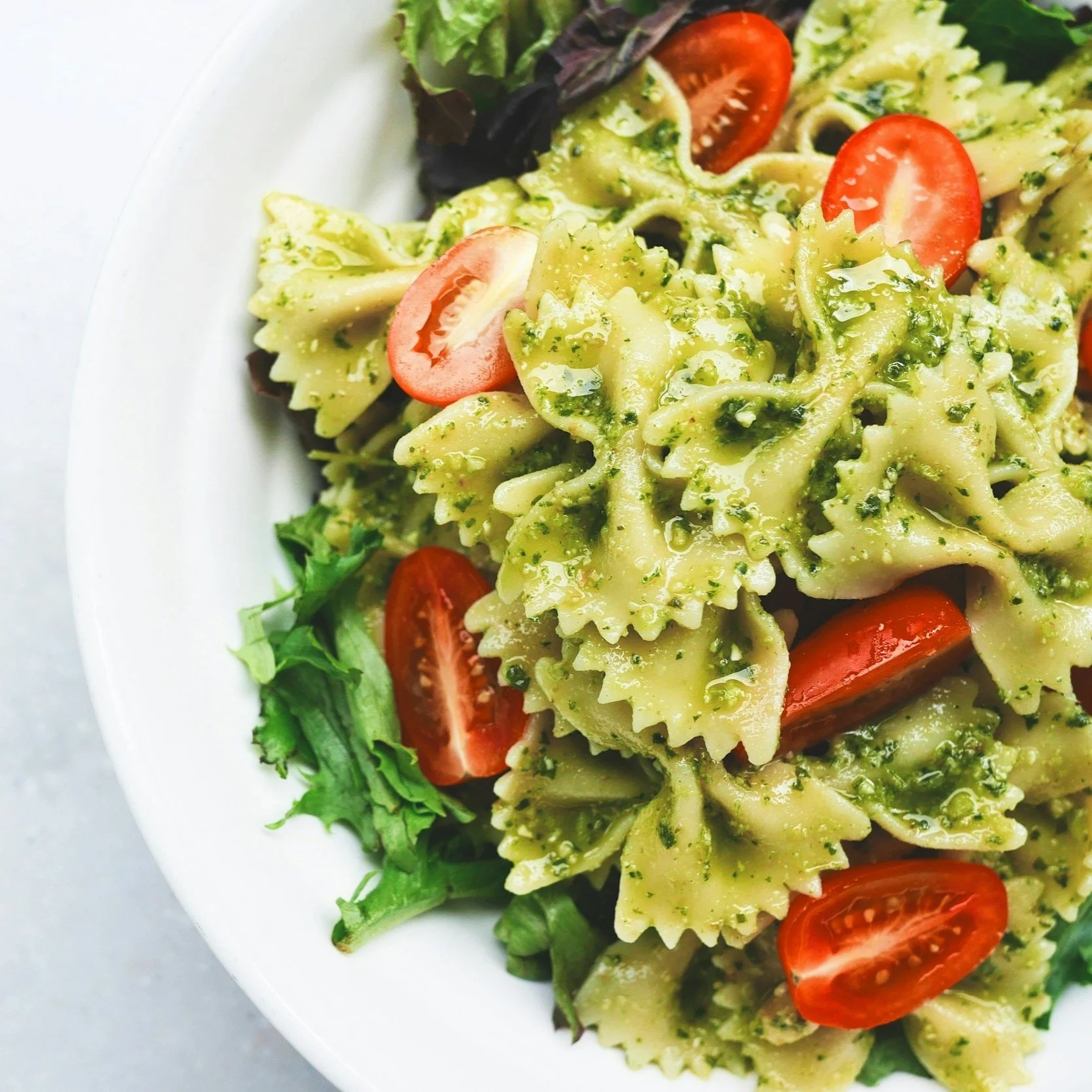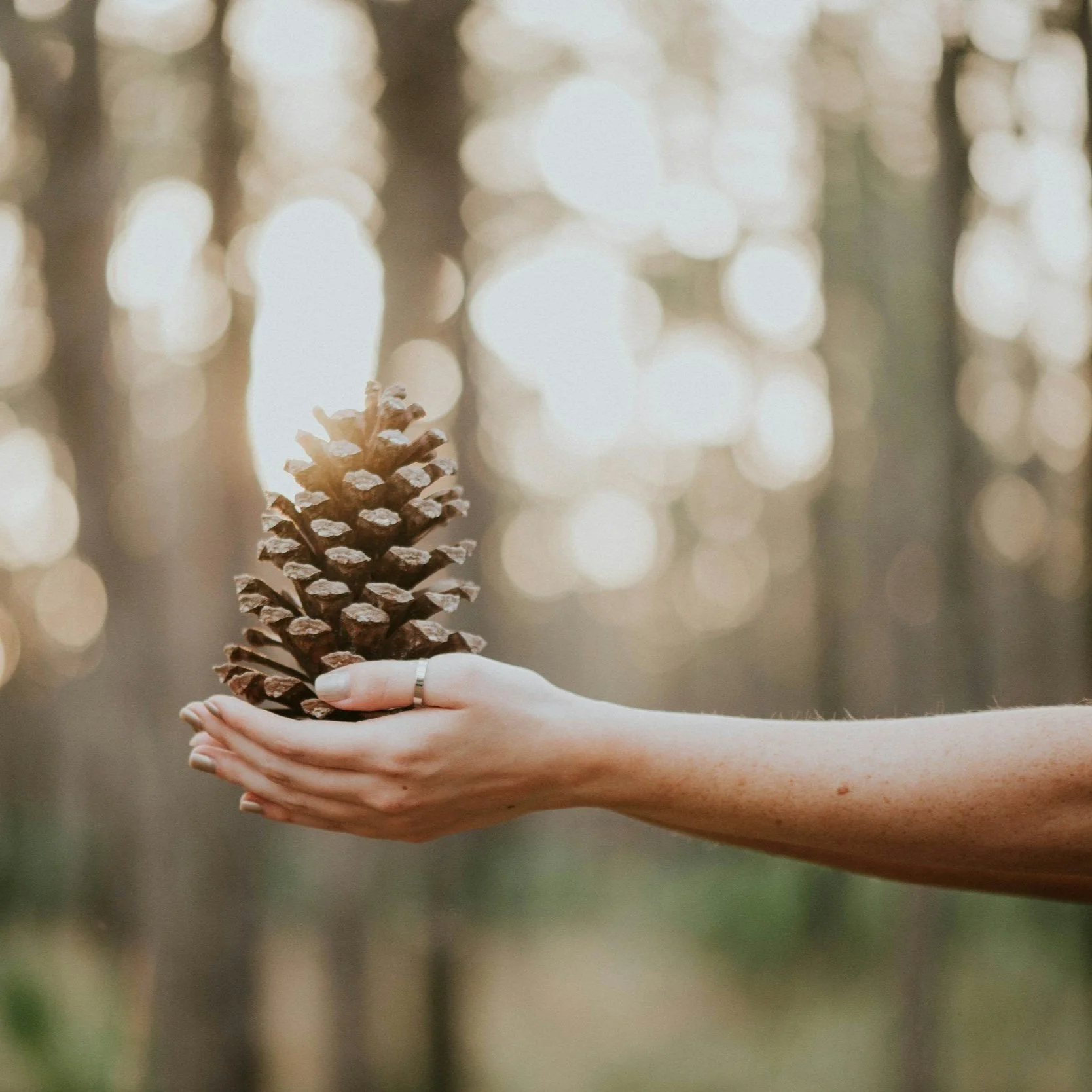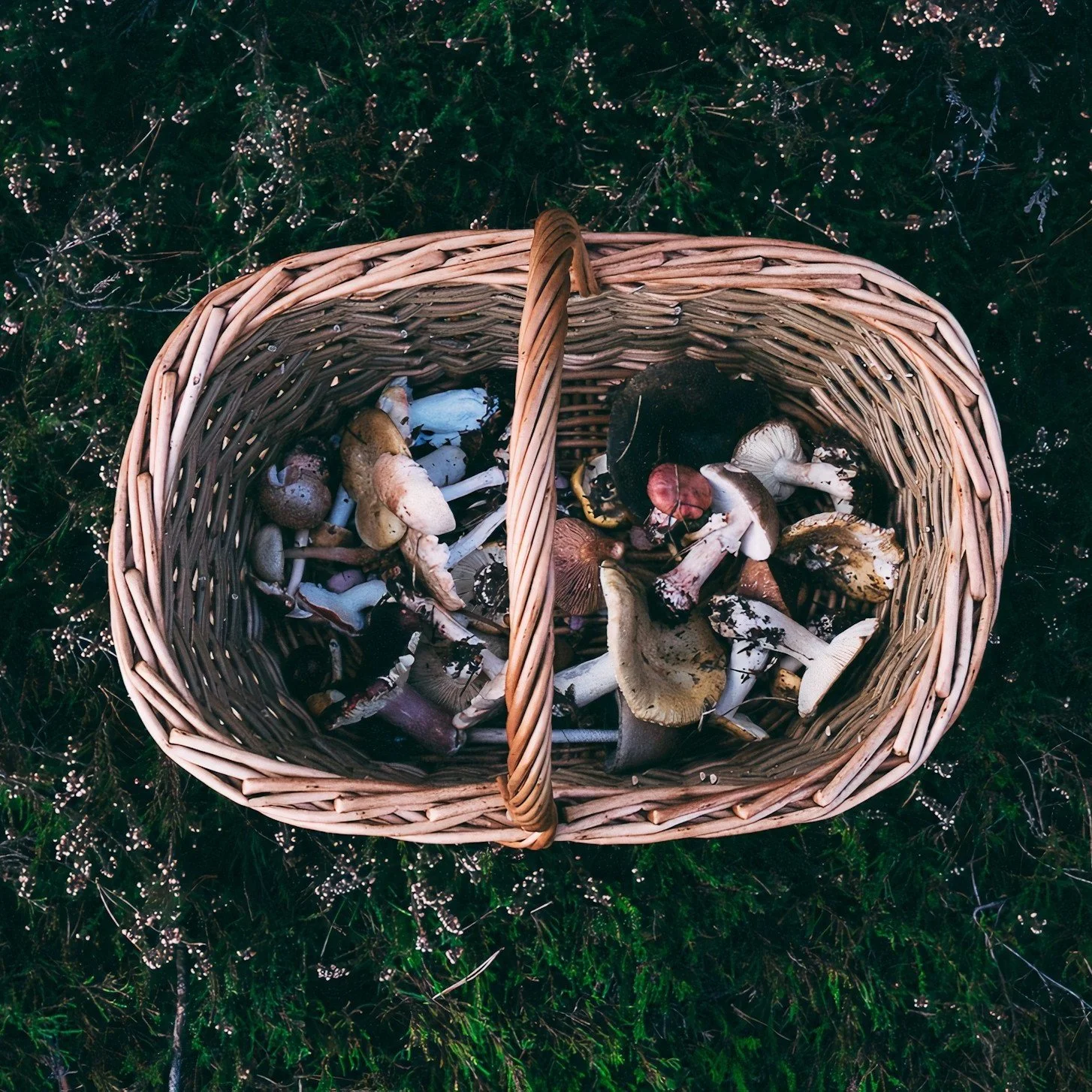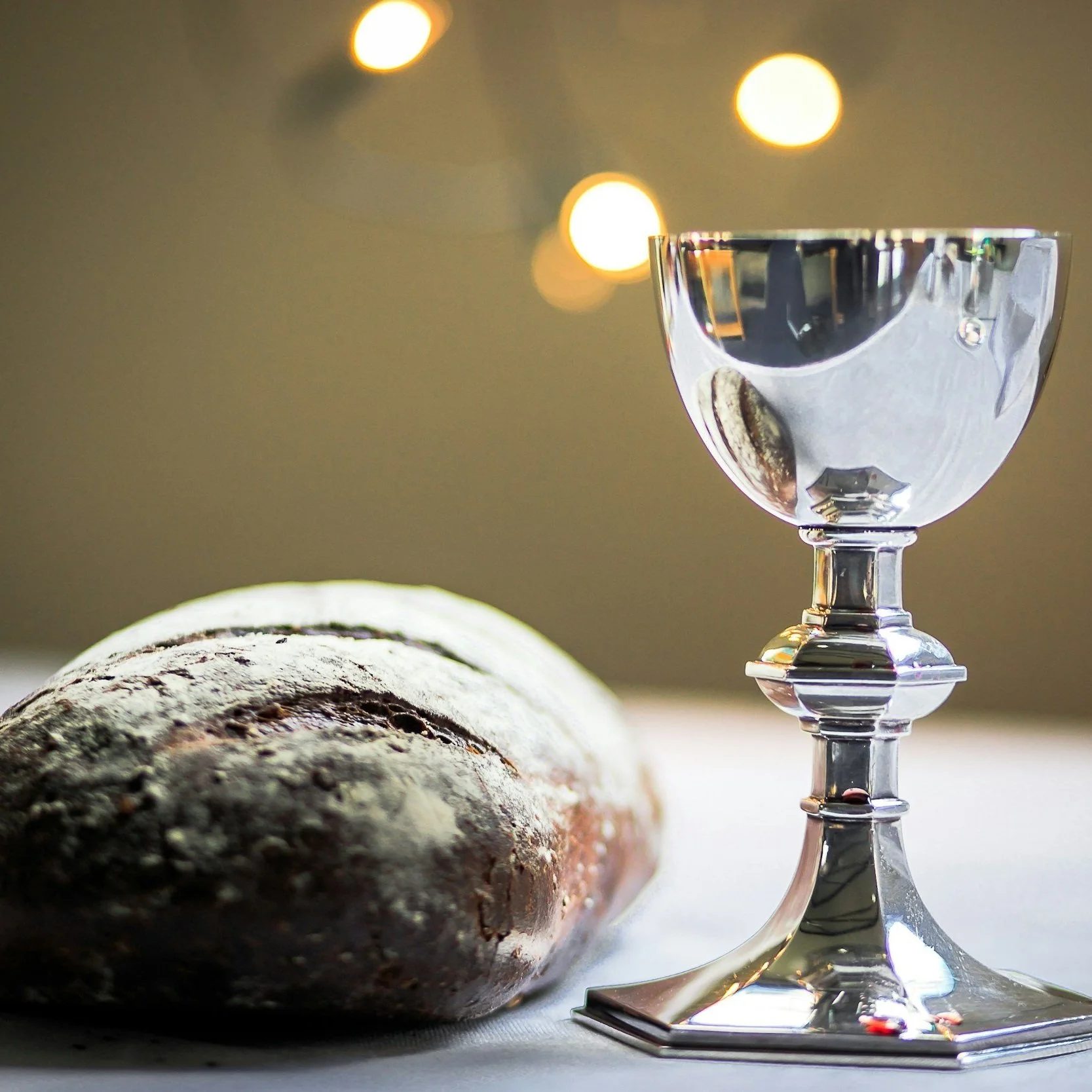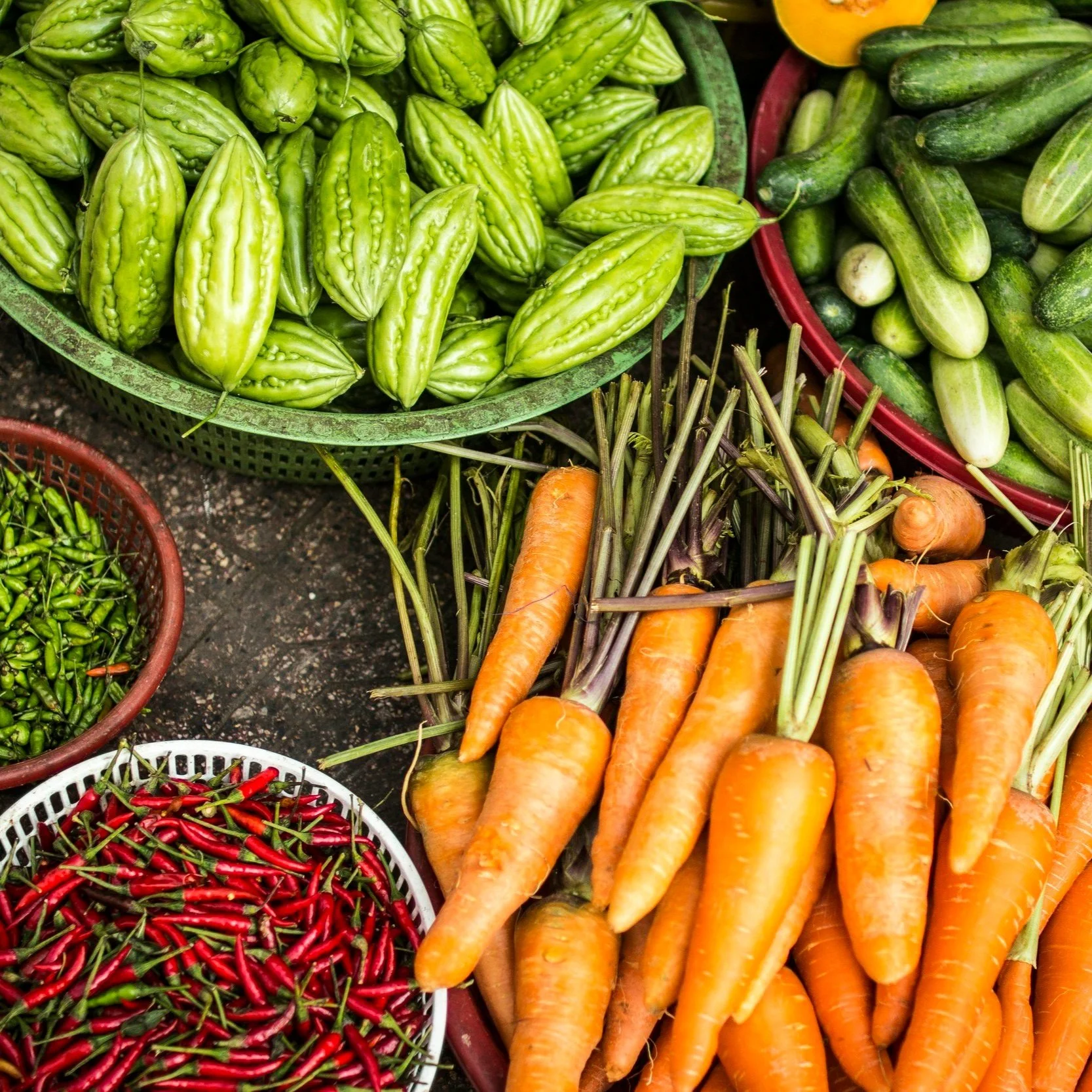
Lammas - Celebrating the First Harvest
August 1
Lammas
and First Harvest Celebrations
Giving Thanks for First Harvest
It is time to give thanks! The work you have put in throughout the year will finally begin to come into full growth. This is the time when you can survey your crops and know what kind of security you will have for the winter. There is still time to affect things and make changes, but your eyes may shift towards culling and harvesting rather than starting something new.
Earth Cycle and Workings
August 1 is the half-way point between the summer solstice and the autumn equinox. The earth has grown fully into her glory. As the longest days and hottest weeks count down, flowers and crops grow large around us, the hunger of winter feels far away, and thankfulness comes easily.
How the World Celebrates
Throughout history and cultures, we as humans choose to mark time and important events with celebrations. They are moments for us to pause from our daily activities and take time to reflect on the larger world. While there is no universal thread or experience that we all share, it is meaningful to understand how others celebrate so we can learn truths that we have in common. Learning lessons from all, while curating our personal celebrations from our own experiences and ancestors.
Celebrations of the First Harvest
So many cultures celebrate their first harvests with feasts, offerings and thanks. These festivals vary on timing based on what each group grows and the schedule of its harvest season, but many happen around the beginning of August. Here are a collection of some of the August celebrations of First Harvest.
Lammas - Christian and Anglo-Saxon
Lammas (meaning Loaf Mass) is a Christian holiday with roots in Anglo-Saxon paganism and may have been called the Festival of the First Fruits (according to the Anglo-Saxon Chronicle). It is a celebration that began in England, on the first harvests of the year and is typically observed with people bringing an offering of wheat, or a loaf of bread to the church as a symbolic gesture of giving from your first fruits.
Celebrations started out regionally with varying names and traditions. As the church expanded and the peoples were Christianized they became somewhat united under the name Lammas which began to be used in England, Wales, Scotland and other areas. Today Lammas is celebrated in many parts of the world both by some modern pagans, as well as some Christians.
Lughnasadh - Celtic
Lughnasadh (pronounced Loo-nah-sah) is a Celtic festival celebrating the first harvest of the year. It was (and is) held from August 1-6th in Ireland, Scotland, and the Isle of Man. The day was sometimes called Bron-trogain meaning “bringing forth [the earth].
It was typically celebrated with a ritual bull sacrifice and giving of first fruits in celebration of the god Lugh for returning the grain held by a greedy god, ending the famine for the people. The people celebrated with feasting from the bountiful harvest, dancing, hiking through the hills, and fairs vending all kinds of food and other items.
As Christianity took over the British Isles these festivals were in many cases incorporated into the Lammas holiday and united in practice under the church. Lughnasadh is still celebrated in many modern pagan communities.
Gwyl Awst or Calan Awst – Wales
In Wales, the First Harvest celebrations were very similar to those in England, Ireland, and Scotland. It was called Gwyl Awst and Calan Awst which means the Feast of August and the Calends of August, either way describing the August 1st holiday set aside to first harvests.
Similarly to nearby countries, their celebrations consisted of feasting, music and dancing. They would offer first fruits by dedicating the first ear of corn to Lugh and burry on a hill. In Wales, and other regions this wasn’t only harvest time for food for the people, but it was often when grain and feed for the animals would start to be cut and stored for the next year, ensuring security for their herds.
Kronia – Greece
Kronia was an ancient Athenian celebration in honor of Kronos, god of the harvest and time in Greece. It lasted from the end of July to the beginning of August and was a day of feasting and celebration where the normal social hierarchy was forgotten and the enslaved were invited to dine alongside their enslavers. It was a day where equal access was celebrated.
In addition to feasting, people would give each other small gifts, like clay or wax figurines, they were affordable for anyone. It’s believed that aspects from this holiday were the inspiration for the Roman Saturnalia, and eventually Christmas celebrations.
It is interesting - it’s a beautiful idea to have a pause in the strains that come from social hierarchies, but I wonder if we have accounts of how the enslaved peoples felt about this day and if their account would vary at all from the others.
Ferragosto – Roman
The Roman emperor Julius Caesar Augustus declared August 1st as a day of rest after the hard months of working to grow crops. Workers were often given gifts of money by their employers, and people would celebrate with feasts, games, and racing horses (which they would decorate with flowers).
This August tradition continues in Italy where even today many businesses shut down for several weeks in August as everyone leaves to go to vacation towns for the holiday season. Today it is celebrated officially on the 15th, which coincides with celebrations for the Assumption of Mary. People celebrate with large parties with friends and family, and often serve cold pastas as well as watermelon and other fruits and vegetables.
Up in the Apennine mountains in Santo Stefano di Sessanio this time is celebrated as “Notte delle Streghe” the Night of the Witches, where old traditions and superstitions about witches power over children is celebrated.
The Festivals of the Saviour – Slavic
In Eastern Slavic countries like Ukraine and Russia, there is a three-stage harvest festival beginning in early August. While the holidays are associated with the Christian church now, it is believed that they have been practiced since long before the arrival of Christianity. Together these holidays set aside time to celebrate and give thanks to the different harvests in the people’s lives, blessing them for the coming year.
August 1 starts with The Saviour of the Honey Feast, where people began to take the honey out of their honeycombs. It is also known as a day for swimming and bathing in the blessing of water.
The second day is The Saviour of the Apple Feast on August 6th. On this day people would gather their apples or other newly ripened fruits and vegetables and bring them to the church to be blessed. It is tradition to not eat apples before this day.
The final celebration is The Nut Feast of the Saviour, held on August 16th. This day was set aside to celebrate and bless walnuts, barley, bread, linen, and other types of cloths
Feast of the Assumption – Palestine
The Feast of the Assumption is a Catholic holiday with its origins in ancient Palestine. The Feast of the Assumption is held on the 15th of August and celebrates the ascendance of Mary into Heaven. Beginning around 200-300 CE, Palestinian Christians dedicated to Mary began a celebration in her memory held around the place where her tomb was believed to be in Jerusalem.
Around the 7th c CE the holiday expanded and was celebrated in Rome first as Dormitio (the Falling Asleep of Mary), and later changed to the Assumption of Mary, along with the belief that her body was taken up to Heaven. Christians in Jerusalem continue to celebrate with an overnight vigil, veneration of Mary, and processions to her tomb. Today the holiday is celebrated by Catholics in many parts of the world.
The Feast of the Assumption is also a big celebration day in Sicily, celebrating similarly with solemn services followed up by festivals of music, food, and drinks.
This holiday holds a special place for me because of its connection to both Cleveland and Sicily. I’ve gone to the Feast of the Assumption here in Little Italy at Holy Rosary Church many times. We have a mass, and then process with Mary through the streets on a Sicilian painted cart. While she goes along people give money in veneration of her. After the religious portions are finished, the festival opens up for food, drinks, a carnival, music and general merriment. Holy Rosary has hosted this event each year since 1899 when it was brought over by the Italian and Sicilian immigrants who were living in the neighborhood.
A beautiful connection to the homeland - the hand-painted Sicilian cart that Mary is carried on here in Cleveland was commissioned by my nonna’s cousin, Tony. He had it sent here from Sicily as a gift to the church and community and in remembrance of the celebrations they had at home.
Sicilian Cart, Holy Rosary, Cleveland
Photo Credit: Fox 8 Cleveland
Buraidah Date Festival - Saudi Arabia
Each year in Saudi Arabia huge festivals are held in celebration of the date when growers from across the region bring their fruits to Buraidah in August after harvest and last for weeks. People celebrate with a market selling over 40 varieties of dates, music and dancing, celebration of heritage, and food and drinks with family and friends. This festival honors not only a favorite food, but also a major export. It is estimated that Saudi Arabia exports a massive 321,000 tons of dates each year.
Nuakhai - India
Nuakhai (New Food) is a celebration in western India honoring the first harvests of new rice. The festival is believed to be ancient and can be traced back to the Vedic times (c. 1500–500 BCE) and honored the third stage of growing (Pralambana yahna - the initial cutting of the crops). The festival is typically held before the autumn grain is ready to harvest, but it is thought they bring the almost ready grain to present to deities for blessing before they can be affected by bugs or animals. The festival involves a 15 day process with rituals and colors to wear. Today people celebrate by giving an offering to the oldest member of the family, they wear new clothes for the occasion, and greet family, friends, and neighbors, eat and drink, and perform music and dances.
Photo Credit: Taiwan Today
The Harvest Festival - Taiwan
The Harvest Festival is a week-long celebration by the indigenous Amis tribes in Taiwan and is celebrated in July, August, and September. The people used the time to pray to the ancestral gods to bless the crops of millet and rice they had harvested so far and continue the growth. They would perform rituals of thanks, celebrate with food, music, and dancing, and games around the fire. The holiday include different celebration days like the day of inviting guests, the night of respecting the elders, and the night of “Valentine’s Day” for young lovers.
Photo Credit: A Yam Market in Nigeria, Wikipedia
New Yam Festival - Nigeria
The New Yam Festival is celebration in Nigeria by both the Yoruba people (who call it Eje), and the Igbo peoples (who call it Iri Ji). The festival originates during early agricultural times and honors the end of the rainy season and gives thanks for the good harvest of yams for the coming year. The celebrations starts the night before with everyone eating the remaining yams from the previous year, and then offering the first of the new yams to the deities. Celebrations range from a day to a week and include ceremonies, cultural dances, music, parades, feasts, and fashion shows.
Tim Vigil, Pueblo, 20th c.
Santo Domingo Feast Day – Pueblo
The Pueblo peoples of modern-day New Mexico, USA celebrate the feast day of Santo Domingo. Catholic Franciscan missionaries brought the image of Saint Dominic to the area in the 1500s CE and the Pueblo there remains named after him. The missionaries imparted an lasting impact on the community and the majority of Pueblos today are Catholic and celebrate the day honoring their patron saint. Today a combination of Catholic and pre-Christian traditions make up the Santo Domingo Feast Day.
The Pueblo peoples start the day with a mass and procession from the church followed by a Green Corn Dance in the public square.. There are markets selling various silver, jewelry, and pottery. People dress in traditional clothing, have music and dancing, and celebrate a feast together.
Feast of the Divine Savior – El Salvador
The Feast of the Divine Savior is held on August 6th in El Salvador and has been celebrated since the early 1500s. The holiday celebrates the Transfiguration of Jesus Christ who is the patron saint and namesake of the country, and honors when Jesus was changed from man back to god. Today the feast is celebrated with a mass, procession through the streets with a statue of Jesus, and re-enactments of Jesus’ transformation. The religious portions are followed with massive parties, feasting, music, and contests.
Harvest Festivals – Ohio
I was curious what First Harvests are being celebrated here in my home state of Ohio, USA. I’ve been to many over the years, different small towns host them for favorite local foods and products. Usually they are filled with all kinds of foods made with the honored product, as well as music, contests, and other fun pastimes. In the month of August, I found festivals for Blueberries, Corn, Garlic, Melon, Tomatoes, and Wine.
Deities
Deities are an important lens to understand culture through. They are physical representations of the forces and energies we see interacting in our world. They give human, relatable images for spiritual ideas and are often imbued with stories and traditions that tell the history and culture of a people. Deities give us something to interact with and enact energy upon. Depending on your background and culture, deity worship could include more solemn expressions like closed rites or could be as casual as putting up a picture of your hero to invoke their energy in your life.
Ahia Njoku – Igbo in Nigeria
Ahia Njoku is the Igbo goddess of yams, productive harvest, and the moon. She is worshipped in Nigeria during the New Yam festival and also at a ceremony called the Ahanjoku Festival which is held for her on the full moon before the New Yam Festival.
Diana – Roman
Diana is the Roman goddess of the hunt, fertility, and childbirth. Her followers celebrated her in August during Nemoralia where they gather flowers and with torches walked to Lake Nemi and celebrated Diana and nature. It is believed this holiday was eventually turned into the Catholic celebration, the Feast of the Assumption for Mary.
Kachinas – Pueblo and Hopi
Kachinas are the gods of the Pueblo, Hopi and Native peoples in the Americas. They control the rain and growth of crops. The Green Corn Dance is a ceremony to invoke the Kachinas to provide continued growth and support to the crops. Communities typically celebrated it for a time between May and August.
Kronos – Greek
Kronos, the Greek god of the harvest and time was celebrated during Kronia in thanks for the bountiful harvests. Slaves and workers were given time off and monetary tips during this holiday for their hard work during the year.
Lugh – Celtic
Lugh is the Celtic Sun God who defeated a cyclops who was forcing the people to give all their food to the king. He was raised by the goddess Tailtiu who also gave herself for the cultivation of the lands. Lughnasadh is a day of thanks for the people’s liberation from these tragedies, and the continuation of good food and harvests.
Maa Samaleswari – Hindu in India
Maa Samaleswari is the Hindu mother goddess and protector of lands in Western Odisha in India. She is the patron goddess there and has a large, 16th c. temple built in her honor. Maa Samaleswari is honored during the Nukhai festival and is offered the first crops to bless the new harvest.
Njoku Ji – Igbo in Nigeria
Njoku Ji is an Igbo god who is a guardian deity and the protector of the yams. He is celebrated at the New Yam Festival in Nigeria. During the festival, his priests perform a ceremony roasting yams in the village center.
Saint Mary – Catholic, Christian
Mary is a Christian saint and the mother of Jesus. She is celebrated during the month of August for her ascension into heaven on the Feast of the Assumption. While the celebrations for her began in Palestine, there is evidence that the Catholic church used her feast to later replace those for Diana that were in Italy previously.
Santo Domingo – Pueblo, Christian
Santo Domingo (St. Dominic) is the Catholic patron saint of astronomers and natural scientists. He is celebrated during August in the Americas including by many Pueblo peoples who were converted to Chrstianity following the impact of European invaders.
Tailtiu – Celtic
Tailtiu is a Celtic goddess of harvests and cultivation and was a member of the Tuatha Dé Danann, the Irish family of deities. She is the foster-mother of Lugh and legend says she cared for him after an invasion. When people were starving following the invasion she used her power of cultivation to bring the land back, but died as a result.
Taribrayan – Amis in Taiwan
Taribrayan is the Amis goddess of harvest and fertility and it is believed all Ami people are descended from her. She is honored during the August Harvest Festival in Taiwan and is given sacrifices of new crops as thanks for her blessing.
Vortumno – Roman
Vortumno is the Roman god of crops, harvest, and the change of seasons. He was celebrated alongside Diana in August as the harvests began to come in and people wanted to give thanks for his blessings.
Associations
Through the passing of time and traditions we begin to associate different colors, foods, and other symbols with particular holidays. The meaning of different colors, animals, or plants come from what we observe about each thing and how we have interacted with it over generations. These associations have been built through time in our food, customs & the stories we tell our children, they give us physical methods to carry on tradition.
Colors
Warm Yellows – clarity, happiness, & creativity
Gold – strength, power, & energy
Bright Oranges – enthusiasm, and energy in work
Earthy Greens – stability, growth, & renewal
Deep Greens – abundance, prosperity, fruitfulness
Light Browns – material success, practicality, & stability
Animals
Bulls – resilience, inner strength, & virility
Lions – strength and loyalty, associated with the sun & the Leo Zodiac sign
Mice – resourcefulness, mindfulness, & wisdom
Rooster – watchfulness, protection, & awareness
Salmon – determination, renewal, & prosperity
Squirrel – preparation, manifestation, & playfulness
Stones
Aventurine – opportunity, prosperity, & manifestation
Carnelian – motivation, vibrancy, & cycles of life
Citrine – joy, abundance, and prosperity
Golden Topaz – prosperity, manifestation & good fortune
Moss Agate – boosts growth, abundance, & balance, known as the gardeners stone
Peridot – strength, balance, & peace
Tiger’s Eye – grounding, balance, & concentration
Flowers
Black-Eyed Susan – motivation, integration, & completion
Calendula – joy, protection, & hope
Goldenrod – good fortune, growth, & endurance
Heather – protection, independence, & good fortune
Poppies – peace, hope, & resilience
Sunflowers – vibrancy, resilience, & loyalty
Experiencing the Season through Food
Food nourishes our soul and carries meaning and history. I love that the significance and message of different foods often comes from what it does, how it makes us feel, and the ways it was used in our history. Every culture and home has their own food traditions for holidays and seasons. These are usually based on what is local and fresh around us, and what we grew up with. Food is an important way we bring meaning and history into our celebrations.
Herbs
Basil – protection & abundance
Fenugreek – attracts wealth & prosperity
Garlic – protection & good health
Rosemary – memory & loyalty
Thyme – courage & new beginnings
Edible Plants
Apples – harvest, generosity & abundance
Billberries & Blueberries – success & fullfillment
Corn - nourishment & prosperity
Grains – growth, nourishment, & sustenance
Grapes – abundance & new beginnings
Nuts – prosperity, fertility & reward
Summer Squash – fertility & abundance
Traditional Foods Around the World
Amala, a yam-flour dish served with gbegiri (bean soup) and ewedu (jute-leaf soup) is eaten at the New Yam Festival in Nigeria
Bread and foods made with grains are typical for Lammas, Lughnasdh, & Gwyl Awst in the British Isles
Chhena Kheeri, a sweet cheese dish with cardamom and nuts, at Nuakhai in India
Cold salads, fruits, & pastas for Ferragosto in Italy
Elote Loco (Crazy corn) a grilled ear of corn covered in mayonnaise, mustard, ketchup, salsa negra, and cotija cheese, is popular at The Divine Savior of the World in El Salvador
Honey cakes, gingerbread, & pastries are eaten at the Saviour of the Honey Feast in Slavic traditions
Kabsa, an Arabic rice dish with lamb and dates is popular at the Buraidah Date Festival in Saudi Arabia
Recipes
Same-Day Foccacia
I went through a lot of recipes and iterations before the foccacia came out the way I wanted, but now I make it about once a week. It is so fluffy, with crispy bottom and sides, and best of all it is done all in one day!
Ingredients:
1 ¾ c Warm Water
1.5 t Instant Yeast
1 T Olive Oil
1 T Honey
3-3 ½ c Flour
2 t Salt
extra olive oil, salt, and your prefered toppings (I love onions and herbs)
Directions:
Combine wet ingredients - water, yeast, olive oil, and honey in a bowl. Add the flour and salt, and mix to combine
Cover and rest 15 min
Stretch and fold, Cover and rest 15 min
Stretch and fold, Cover and rest 90 min
Prepare tray: parchment paper and about 3T olive oil. Tip dough into tray, fold over into thirds and flip so smooth side is up
Cover and proof 90 min
Drizzle with oil and dimple with fingers. Add salt and toppings
Bake on lowest rack at 430 for 20-25 min
Summer Pasta Salad
Pasta salad always seems to elude me. I love it when I have someone else’s but mine never seems to come out right. After learning pasta salads are traditional in Italy at this time I figured it was time for another try. I really like this combination, I think the key is to start with the basics and then throw in whatever veggies you have on hand.
Salad Ingredients:
1/2 lb Pasta
1 Bell Pepper, diced
6 Radishes
1/2 Red Onion
pint of Cherry Tomatoes
1 c Feta cheese
1/4 lb salami, diced
1 can chick peas
Handful of Basil
Dressing Ingredients:
1/2 c Olive Oil
1/4 c Red Wine Vinegar
2 T Sweet Mustard
2 cloves garlic, minced
2 t Italian Seasoning
Salt & Pepper
Directions:
Boil your preferred shape of pasta and let cool, drizzle a little oil on it when cooling so it doesn’t stick together.
Chop all vegetables and salami into small pieces. Rinse chick peas.
Combine pasta, vegetables, salami, and feta in a bowl.
Combine dressing ingredients and whisk to emulsify. Pour over salad and stir to cover.
Spicy Corn and Radish Salad
This is a recipe I got from Food & Wine magazine about 15 years ago! It has been a favorite summer salad in our house ever since.
Salad Ingredients:
4 ears of Corn
6 Radishes
1/4 Red Onion
1/2 c Parsley
Dressing Ingredients:
2 T Lime Juice
1 Jalapeño
1 1/2 t Honey
1/4 t Cumin
1/4 c Vegetable Oil
Salt and Pepper
Directions:
Remove corn kernals from the ears, thinly slice radishes and onion, and shop parsley.
In a blender, puree the lime juice, jalapeño, honey and cumin and oil, season with salt and pepper.
Toss the corn radishes, red onion, parsley, and dressing together. Season with salt and pepper and serve.
Buttermilk Blueberry Cake
This is another recipe I’ve been making for decades, I don’t remember where I first found it, but it is great as a summer dessert or sweet breakfast. With the blueberry associations for Lammas and Lughnasadh, I knew it was the perfect thing to add to our celebrations.
Ingredients:
1/2 c Butter, softened
1 T Lemon Zest
1 c Sugar
1 Egg
1 t Vanilla
2 c Flour
2 t Baking Powder
1 t Salt
2 c Blueberries
1/2 c Buttermilk
Preheat the oven to 350ºF.
Toss the blueberries in 1/4 c of the flour
Cream the butter with the lemon zest and sugar until light and fluffy. Add the egg and vanilla and beat until combined.
Combine the remaining 1 3/4 c flour, baking powder and salt.
Start combining the flour mixture with the butter a little bit at a time. Add in buttermilk and remaining flour and stir until combined. Gently fold in the blueberries.
Prepar a square baking dish by greasing with some butter. Pour batter into pan and even out. Sprinkle additional sugar on top if you’d like.
Bake at 350º for 35 to 45 minutes, let cool before serving.
Red Sangria
This recipe is one I always make when we go down to the Gulf Coast in the summer. My grandparents have a condo down there and let us stay. We would make a big batch of this and just soak in the sun.
Ingredients:
1 bottle Red Wine
2 c Orange juice
1/4 c Lemon juice
1/4 c Triple Sec
1/4 c Sugar
2-3 Cinnamon sticks
1 Orange, sliced and quartered
Directions:
Combine all ingredients in a pitcher. Mix and let sit (overnight is best). I like to use Orange-Mango juice when I can. You can combine with club soda for a lighter spritzer option.
The Actions of Celebrating
Activities, crafts, and rituals are the ways we physically connect and carry on traditions from the past. It is through these physical manifestations that we learn to connect with our ancestors and the meaning of a holiday. Look for ways to acknowledge your history and traditions, while creating some of your own.
Traditional Activities, Crafts & Rituals
Baking Bread
Bread is central to Lammas, Lughnasadh, and other harvest festivals. People celebrate this time by baking and eating bread, and presenting it in thanks for the blessing of the first harvest.
Celebrate this season by making or buying a nice loaf of bread and sharing it with a loved one, giving thanks for the nourishment it brings.
Giving Thanks
First harvests are a time of safety and security, when people can physically see that they have enough food to make it through the winter, or how much they will be able to sell. This naturally becomes a time of giving thanks.
Celebrate this season by creating traditions that give you a space to express gratitude for all you have.
Gifting
Some traditions use this time to give small gifts, a form of showing thanks for someone’s work in your life.
Celebrate this season by writing a thank you note or picking up something small for someone in your life.
Small Ways to Celebrate
Indoor Activities
Write a thank you note or gratitude list
Bake or eat bread
Acknowledge and give thanks for every set of hands that made your meal possible. Those who planted and picked, washed and shipped, processed, sold, and finally prepared.
Plan or divine for the future
Outdoor Activities
Gathering and Foraging
Prune plants and bushes
Clean up the earth
Start thinking about next year’s garden
Rest in the outdoors
Communal Bread Breaking Ritual
As a former Christian, when I was thinking of rituals that resonate with this holiday, taking the Eucharist (Communion) came to mind. Apart from the “body and blood” – it was a time set aside to come together as a community to give thanks for the gifts you have been given through Christ. Even when I go back and read the Episcopal liturgy, it reminds me of other ceremonies at this time of year giving thanks for the cycle from death to life and the gifts it brings.
Eucharist Liturgy from the Episcopal Book of Common Prayer:
We celebrate the memorial of our redemption, O Father, in this sacrifice of praise and thanksgiving. Recalling his death, resurrection, and ascension, we offer you these gifts.
Here is a re-thinking of this ritual as something that resonates in my life now:
Gather your favorite people close if you are able - Have a loaf of bread to share (and maybe some wine if you would like).
Share a blessing of thanks - (I have re-worked the one above but you can also find one or write your own)
Celebrating the signs of our renewal, we give thanks for all we have received. Remembering the growth found in our defeats, renewals, and triumphs, we offer up this bread and community in thanks.
Commune together and give thanks - Tear off bread to eat while you share with each other your defeats and triumphs over the past year. The places you fell down but were able to get back up, the unexpected blessings that came at just the right time, the times where you were stretched thin but a friend, or message, or relief came just at the right time to lift you up.
Tarot Spread for First Harvest
In writing this spread I tried to think about the core elements of these harvest celebrations - harvests, thanks, continuation of work, and community. I hope it resonates with you.
What is coming to completion in my life?
What am I still working on?
What can I give thanks for?
Where should I seek community to give thanks together?
Meditations for First Harvest
Summer is thriving in her fullness as the sun shines, flowers bloom, and farmstands overflow with all kinds of gifts from the earth. This is a time of natural thankfulness when warmth and plenty are easier to find. Give thanks for your fullness now and let it sustain you through more difficult times.
Acknowledge where you have abundance in your life and can overflow back to your community. Come together with others, share meals and stories. This is a good time to prepare food for a busy friend or give to someone in need.



























